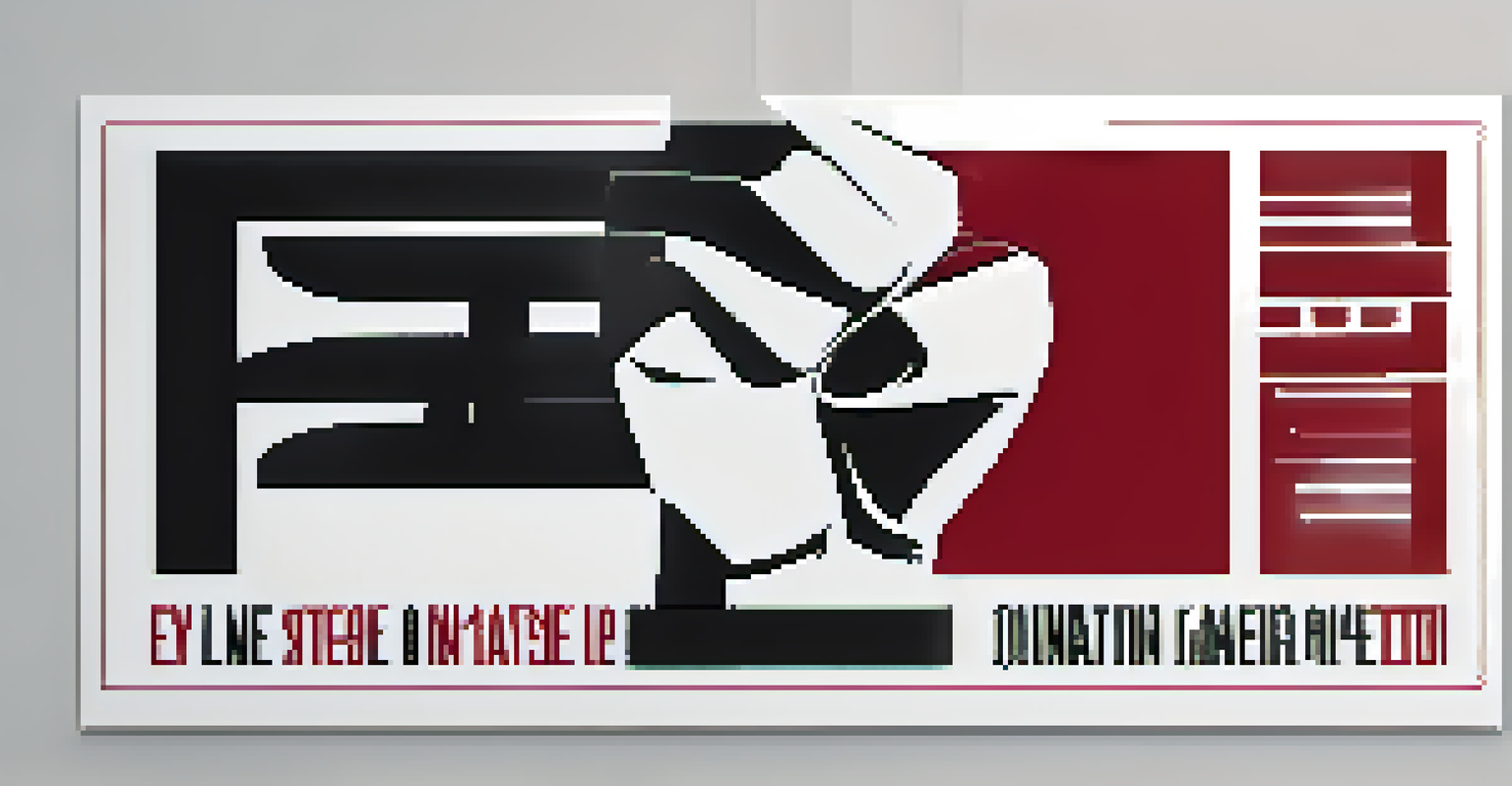Using Graphic Design to Raise Awareness on Social Issues

The Power of Visual Communication in Advocacy
Graphic design serves as a powerful tool for visual communication. It can distill complex social issues into digestible visuals that resonate with audiences. Just think about how an impactful image can evoke emotions and spur action—this is the essence of graphic design in advocacy.
Design is the silent ambassador of your brand.
When people encounter striking visuals, they are more likely to remember the message. For instance, iconic posters from historical movements have left lasting impressions and inspired change. This shows that well-crafted designs can transcend language barriers and reach diverse populations.
Ultimately, graphic design helps to simplify the narrative around social issues, making them more accessible. By using colors, typography, and imagery effectively, designers can create a dialogue that invites viewers to engage with critical topics—helping to raise awareness on a larger scale.
Creating Emotional Connections Through Design
One of the most compelling aspects of graphic design is its ability to forge emotional connections. Designers often use imagery that resonates with the audience's feelings, allowing them to empathize with social issues on a deeper level. This emotional engagement can be key to motivating individuals to take action.

For instance, a well-designed infographic about climate change might include stark images of environmental destruction that evoke concern. By illustrating the severity of the issue visually, designers can inspire a sense of urgency, prompting viewers to reconsider their actions.
Visuals Simplify Complex Issues
Graphic design transforms intricate social topics into accessible visuals that resonate with diverse audiences.
By tapping into human emotions, graphic design transforms awareness into a personal mission. This connection creates a community of advocates united by a shared understanding of the issue, ultimately amplifying the impact of the message.
Utilizing Storytelling in Graphic Design
Storytelling is an essential element of effective graphic design, especially in raising awareness about social issues. A compelling narrative can be woven through visuals, guiding the audience through a journey that highlights the importance of the issue at hand. This approach captures attention and makes the information more memorable.
Graphic design will save the world right after rock and roll does.
Consider a series of posters that tell the story of a local community's struggle with homelessness. Each poster could showcase individual stories, illustrating their challenges and triumphs. This narrative technique not only informs but also humanizes the issue, fostering empathy in the audience.
By integrating storytelling into graphic design, advocates can create more profound connections and inspire action. When people see themselves in the story, they are more likely to engage and contribute to the cause.
The Role of Social Media in Design Campaigns
In today's digital age, social media plays a crucial role in disseminating graphic design campaigns. Platforms like Instagram and Twitter are visual-centric, making them ideal for sharing impactful designs that raise awareness about social issues. This not only increases the reach but also encourages more people to participate in the conversation.
For example, a designer might create a striking graphic for a social justice campaign and share it on social media. The quick sharing and engagement can lead to a viral effect, spreading the message far beyond the designer's original audience. This collective sharing amplifies the impact of the design.
Emotional Engagement Drives Action
By forging emotional connections through design, advocates can motivate individuals to take action on social issues.
By leveraging social media, graphic designers can tap into vast networks of advocates and allies. This interconnectedness fosters a sense of community and urgency around social issues, making it easier for movements to gain momentum.
Design for Inclusivity and Accessibility
Inclusivity and accessibility are fundamental principles in graphic design, especially when addressing social issues. Designers must consider diverse audiences and ensure that their work is accessible to everyone, regardless of their background or abilities. This approach not only broadens the reach but also fosters a sense of belonging.
For instance, using clear fonts and high-contrast colors can make designs more readable for individuals with visual impairments. Additionally, providing alternative text descriptions for images can ensure that visually impaired individuals can engage with the content. These practices make the message more inclusive.
By prioritizing inclusivity in design, advocates can reach a wider audience and empower those who might otherwise be marginalized. This thoughtful approach enhances the overall effectiveness of awareness campaigns.
Collaborating with Activists and Communities
Collaboration between graphic designers and activists or communities can lead to powerful awareness campaigns. By working closely with those directly affected by the social issue, designers can gain insights that inform their work. This partnership fosters authenticity and ensures that the messages resonate with the intended audience.
For example, a designer might team up with a local community organization to create materials that reflect the community's voice and needs. This collaborative process can produce designs that are not only visually appealing but also deeply rooted in the lived experiences of the individuals involved.
Collaboration Enhances Authenticity
Working closely with communities and activists allows graphic designers to create impactful awareness campaigns that reflect real experiences.
Through collaboration, graphic designers can amplify the voices of those they aim to support. This synergy between design and activism enhances the overall impact of awareness efforts, creating a more effective movement for change.
Measuring the Impact of Graphic Design in Advocacy
Measuring the impact of graphic design on raising awareness can be challenging yet essential. Designers and advocates must evaluate whether their campaigns are effectively reaching and influencing audiences. This process often involves analyzing engagement metrics, feedback, and changes in public attitudes toward social issues.
For instance, tracking social media shares, comments, and likes can provide insight into how well a design resonates with viewers. Additionally, surveys and interviews can help gather qualitative data on audience perceptions and awareness levels. This information can inform future campaigns for heightened effectiveness.

By assessing the impact of graphic design, advocates can refine their strategies and better allocate resources. This continuous improvement cycle ensures that design remains a vital component in the fight for social justice and awareness.